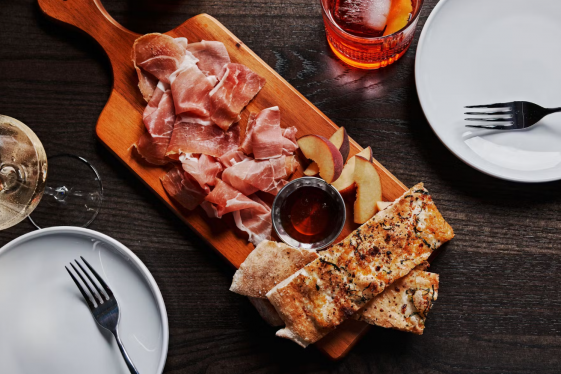‘Beyond the Medici’: A Window Into Florentine Baroque Art
The exhibition “Beyond the Medici: The Haukohl Family Collection” is currently on view at the Georgia Museum of Art through May 18. Mark Fehrs Haukohl, president of a multinational family investment office based in Houston, organized the show from his family’s private collection of Florentine Baroque art, the largest outside of Italy. He wrote, “In...
READ MORENew Italian Restaurant Osteria Olio Executes Traditional Luxury
OSTERIA OLIO (355 Oneta St., 762-316-1818): Is there still room for more high-end restaurants in Athens? Sure, why not? Osteria Olio, the brand-new swanky restaurant that’s part of the brand-new swanky boutique hotel Rivet House, is the first place in 28 years of living in this town where I have had my car valet parked. There is no other option unl...
READ MORENew Italian restaurant Osteria Olio serves up community and hospitality
Just five minutes from downtown Athens lies one of the Classic City’s newest restaurants: Osteria Olio, which opened its doors on June 7, 2024. Osteria Olio resides within Rivet House, a hotel on the historic northside of Athens. Both businesses are owned by James and Jessica Whitley, a local Athens couple. Rivet House and Osteria Olio are managed...
READ MOREDiscovering Pier Francesco Foschi at the Georgia Museum of Art
Pontormo, del Sarto, Foschi. One of these names is much less of a household name when it comes to 16th-century Italian art, but the Georgia Museum of Art at the University of Georgia aims to change that this January. “Wealth and Beauty: Pier Francesco Foschi and Painting in Renaissance Florence,” organized by Nelda Damiano, the museum’s Pierre Dau...
READ MOREMuseum to feature Italian Renaissance drawings
“Master, Pupil, Follower: 16th- to 18th-Century Italian Works on Paper,” on display at Georgia Museum of Art through March 8. Drawing was at the core of Renaissance art and from the 16th century on Italian artists focused on drawing just as much if not more so than painting. Giorgio Vasari, an influential Italian painter, architect and historian, r...
READ MORECaravaggio influence on display at Georgia Museum of Art exhibit
In early-17th-century Rome, painter Michelangelo Merisi da Caravaggio sparked an artistic revolution in the Eternal City. Painters from all corners of Europe traveled to Rome to see his work and emulate his handling of light and dark, use of live models, dramatic staging and striking realism. Caravaggio’s style drew a huge following and altered the...
READ MORE‘Drama and Devotion in Baroque Rome’ on view
In early-17th-century Rome, painter Michelangelo Merisi da Caravaggio (1571 – 1610) sparked an artistic revolution in the Eternal City. Painters from all corners of Europe traveled to Rome to see his work and emulate his handling of light and dark, use of live models, dramatic staging and striking realism. Caravaggio’s style drew a huge following a...
READ MORE'Life, Love and Marriage Chests,' MFA Exit Show and More Local Art News
Renaissance Marriages: During the Italian Renaissance, exquisitely decorated wooden chests known as cassoni were an important part of marriage rituals. Typically commissioned in pairs by the bride’s father as part of her dowry, the chests existed as an expression of the family’s wealth, and represented new alliances between elite families. While so...
READ MORE












